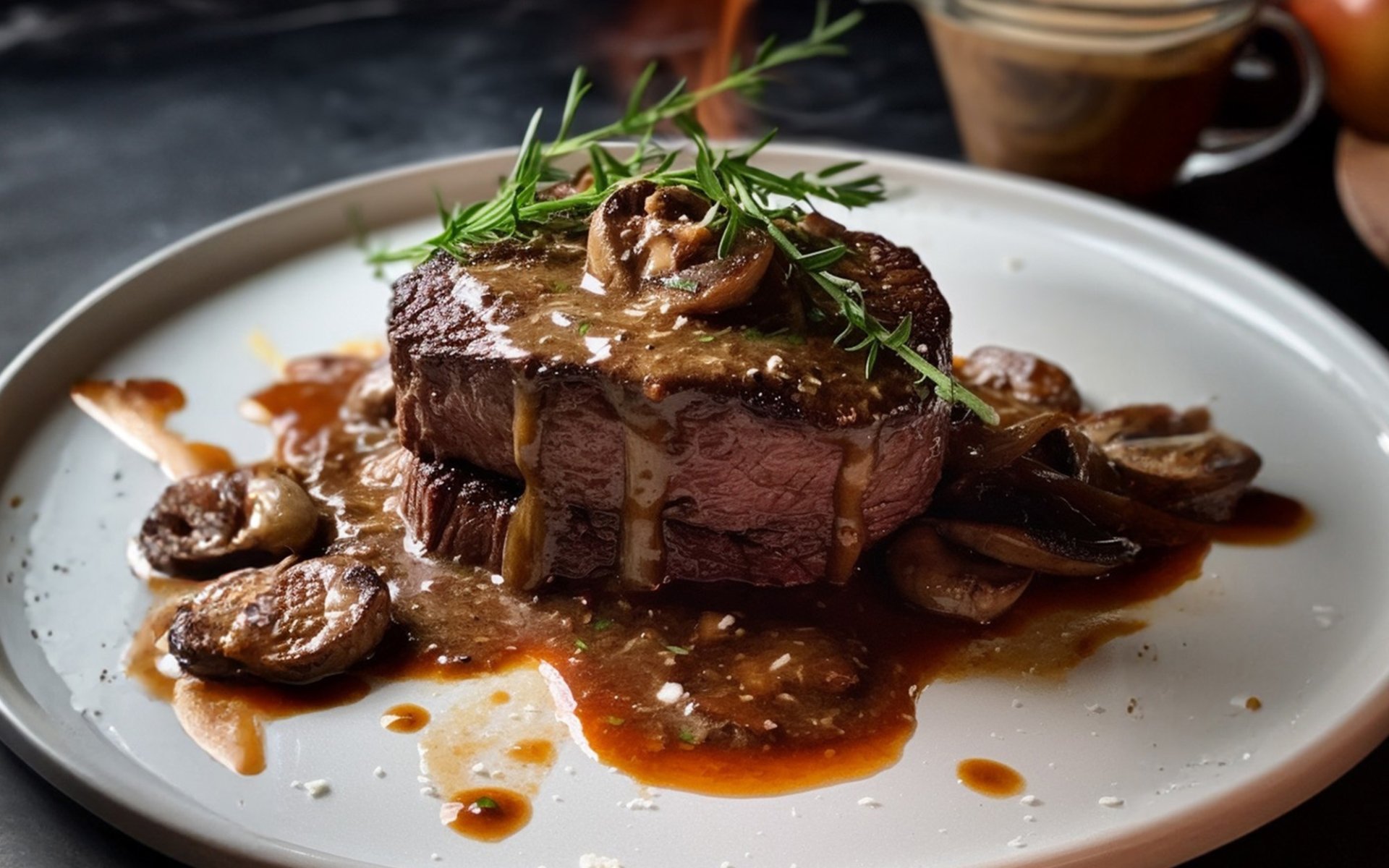Steak Diane

Steak Diane is an elegant dish that has gained considerable fame in both Europe and America. However, its historical narrative is rather obscure, with its true origins remaining a subject of debate among food historians. The most widely discussed theory posits that Steak Diane was created by the French chef Beniamino Schiavon at a luxurious French restaurant in New York City during the early 20th century.
The Allure of Flavor, Technique, and Luxury
Steak Diane is one of the most popular steak dishes. Historically, it was often prepared with venison before later adapting to use beef tenderloin, a highly prized and tender cut. It is seasoned with Sauce Diane, a distinctive concoction typically featuring finely minced onions, truffles, butter, mustard, Worcestershire sauce, and fresh herbs. The thrilling climax of its preparation involves flambéing with brandy a technique that not only enhances the flavor and aroma but also creates a captivating visual spectacle for diners. This dramatic presentation contributed significantly to Steak Diane's immense popularity among the upper class and its reputation as a luxurious and sophisticated dish.
Inspired by the Goddess Diana
The name Steak Diane is said to be derived from Diana, the Roman goddess of the hunt, wild animals, and the moon. This naming choice honors her strength, beauty, courage, and hunting prowess. The connection to Goddess Diana also adds an intriguing layer to the historical narrative of Steak Diane, making the dish not just a culinary delight but also a story worth exploring.
Widespread Adoption and Recipe Evolution
Soon after its introduction, Steak Diane became recognized as a fine dining dish, enjoying widespread popularity throughout the 20th century. During this period, the recipe occasionally underwent modifications. Given the limited availability of venison, the original ingredient, diners and chefs increasingly turned to beef, which was more readily accessible and affordable.
Over time, Steak Diane continued to evolve, with each new iteration reflecting the culinary influences and innovations of different regions. For example, some versions might substitute Cognac or Bourbon for brandy during the flambé process. New ingredients were also introduced into the sauce, such as mushrooms, onions, or even sun-dried tomatoes, to add depth of flavor and texture. Furthermore, adaptations using other proteins like chicken or fish emerged to cater to changing dietary preferences, such as for those avoiding red meat.
In the post-World War II era, Steak Diane began to gain recognition in London, England. London newspapers reported that many people were ordering champagne and Steak Diane at the Palace Hotel, St. Moritz, which was created by Bartolomeo Calderoni, the hotel's head chef, indicating the dish's growing prevalence in Europe.
Later, in the 1940s, Steak Diane made its way to Australia, appearing at Romano's restaurant in Sydney, owned by Tony Clerici. This restaurant reportedly acquired the recipe from London, further cementing Steak Diane's popularity in Australia as well.
Steak Diane Today: A Classic That Continues to Evolve
Today, Steak Diane remains a classic and popular dish in many countries across Europe and America. Modern chefs continue to adapt the recipe to suit contemporary tastes and culinary trends. While the traditional version typically features venison or beef tenderloin (the most tender cut), some variations might use sirloin or ribeye, offering different flavor profiles and fat content. These adaptations have contributed to Steak Diane's broad appeal, attracting a diverse range of diners, whether they appreciate its classic roots or seek new interpretations of this uniquely sauced steak.


